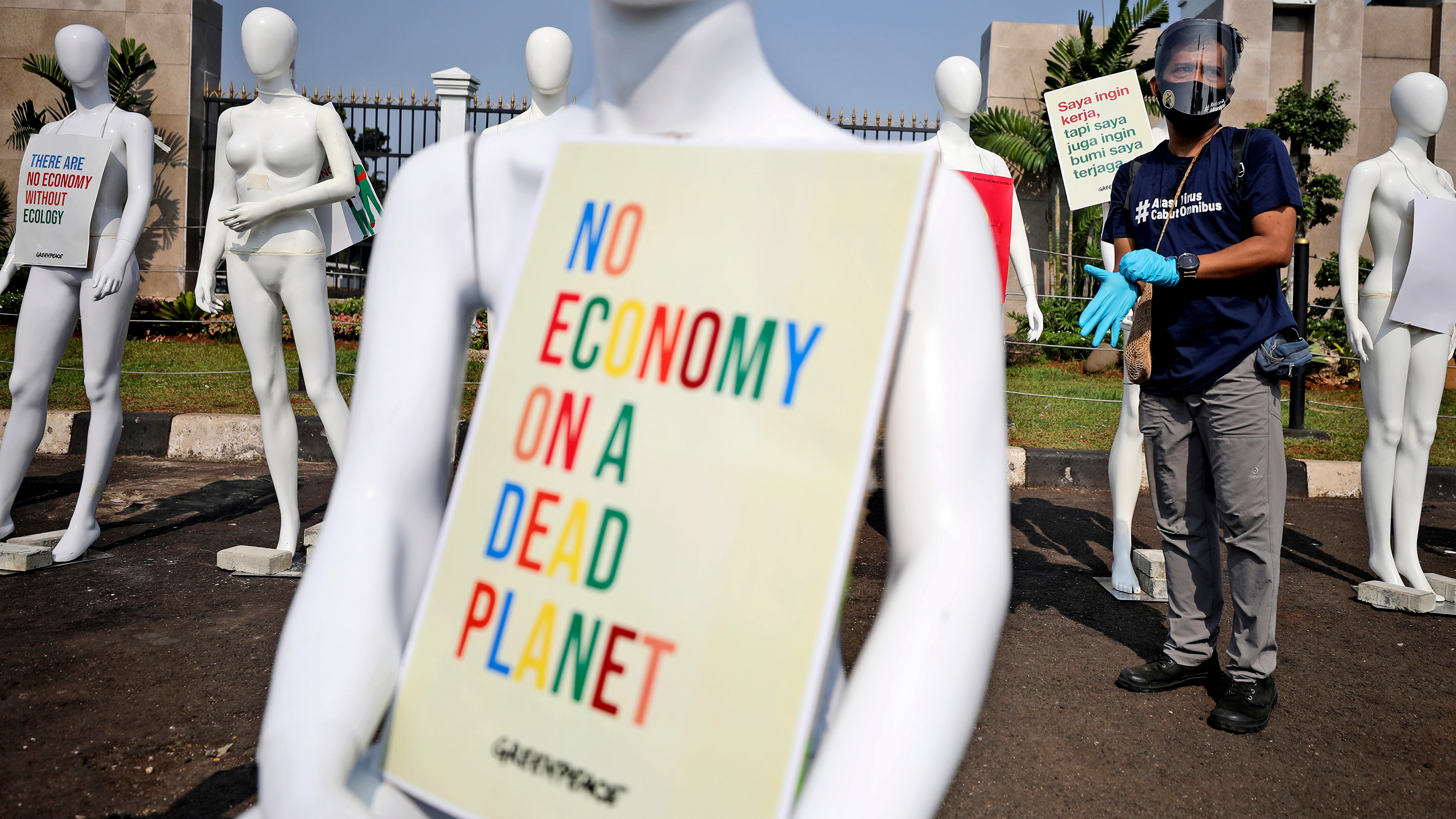
Environmental activists have been continuing their campaigns during the coronavirus crisis. /AP Photo/Dita Alangkara
Environmental activists have been continuing their campaigns during the coronavirus crisis. /AP Photo/Dita Alangkara
As countries come out of lockdown and begin to increase the output of their economies, the International Energy Agency (IEA) is warning that clean energy innovation targets could be missed.
As the coronavirus crisis spreads across the world, there has been a significant drop in pollution in many major cities. Countries imposed lockdowns, temporarily closed factories, while global and regional restrictions on movement saw a near-end to local car use and international air travel.
Those nations coming out of lockdown, largely in Asia and Europe, are now increasing industrial output as their numbers of new cases fall, as they do so the IEA wants them to put clean energy goals at the heart of their post-COVID-19 recovery strategies.
The COVID-19 pandemic risks to be a setback for clean energy innovation.
- IEA report
In its latest report, the IEA says that the "unprecedented health emergency and economic crisis triggered by the COVID-19 pandemic risks to be a setback for clean energy innovation efforts at a time in which faster progress is needed."
The report notes that there are "no single or simple solutions to putting the world on a sustainable path to net-zero emissions." It details five fundamental innovation principles, including the building of new clean energy infrastructure, mobilizing private finance and an emphasis on increased international cooperation.
The report will make for interesting reading in Brussels, as the European Union (EU) strives to be climate-neutral by 2050. It is an objective at the heart of European Commission President, Ursula von der Leyen's transformative 'European Green Deal' and in line with the EU's commitment to global climate action under the Paris Agreement, signed in 2015.
But the bloc faces a growing number of obstacles to achieve their ambitious goals.
The authors of the IEA report sound a note of caution, advising that for some sectors 2050 is just one business cycle away, making the timing of investments and the availability of new technologies critical.
"If the right technologies in the steel, cement and chemical sectors can reach the market in time for the next 25-year refurbishment cycle – due to start around 2030 – they can prevent nearly 60 gigatonnes of CO2 emissions," the IEA notes.
The IEA warns that a failure to accelerate progress now risks pushing the transition to net-zero emissions further into the future.
Reducing global CO2 levels will require a broad range of different technologies. The report urges investment in vital technologies like "hydrogen electrolyzers" that "could increase by up to 10 percent by 2030, making it harder to scale up production."
Adding that, "we project that investments in technologies, that are today at the stage of large prototype and demonstration, would average around $350 billion a year over the next two decades."
These technologies, while many are known today, not all of them are ready, the report reads.